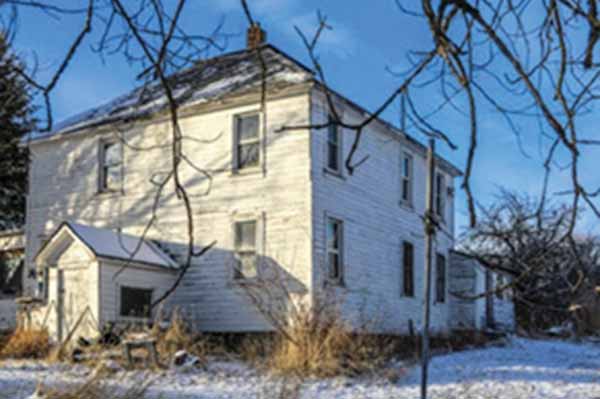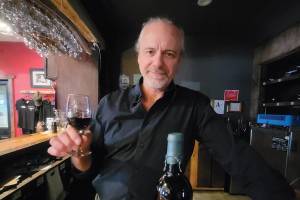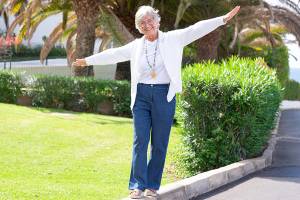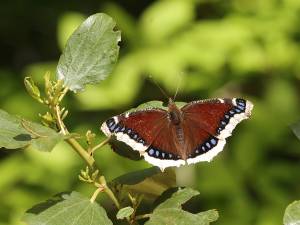By Marrie M. Ford
My husband and I have never been fans of traditional retirement. We both have a desire to continue contributing to our community and circle of influence as long as we are able, and neither of us golf! While we love to travel, events of the past few years changed so many things—including my husband’s work travel to the UK. As it turned out, all of these changes created a perfect opportunity for something we had hoped for, but wondered if we could ever make happen.
We met at Flathead High School in the 70s, and over the next 45+ years we would marry, move 20 times, raise five children, work for numerous companies, and pay for braces, college, and weddings. As empty-nesters, we spent a decade in Kansas City, Missouri, renovating houses in an old Victorian neighborhood. We had no crew, no big budget, just a love of Historic Homes, and the satisfaction of seeing a neighborhood revitalized.
From time to time we would discuss the desire to return to the Flathead Valley, but like many former residents, we wondered if moving back to our home state was possible. So much had changed, but the mountains were calling, and when the opportunity presented itself in the way of a rundown farm north of Bigfork, we decided to jump.
The previous owners of the farm had weathered a series of life’s challenges and lost the battle of upkeep with the place years earlier. Every building, including the house, and every square foot of the property needed attention, repair, and purpose.
About two weeks after we arrived in May 2021, a neighbor pulled into the driveway, introduced herself and asked what our intentions were. I told her that we planned to renovate the house and clean up the land. She then asked how old we were! I told her we were both 63, and she told me that keeping up with this place is “hard work”! I told her we were up for it, she waved and went on her way.
It was indeed non-stop hard work. We started by gutting the house.
Prior to this project, I had not had much admiration for Foursquare houses—I considered them architecturally uninteresting. But as I began to research, their simplicity, stability, and sensible floor plans gradually grew on me. This home’s floor plan had already been altered at least once, so we designed it to be as open as possible to accommodate visiting children and grandchildren.
We also began the long task of cleaning up the acreage. We joked that not only did we have trash, we had categories of trash! In 2 months, we filled over 100 of the large “contractor size” trash bags.
By the end of the summer we were able to move out of the camper, and into the main floor bedroom of the house—entering through the deck, as the remainder was still full of dust and sawdust.
The summer of 2022 was spent turning a tiny old tool shed into a small Guest Cabin, and putting in some camper hook-ups, so our children could all bring their campers up over the 4th of July. We added a Safari tent and decided to let a few people camp on our property, in hopes of making the land self-supporting as far as paying utilities and taxes. We continued work on the interior of the house, and also began work on what I lovingly named “The Art Barn”—a future sewing studio, classroom & Maker Space.
The summer of 2023 saw us add infrastructure: new water and sewer lines, electricity, and continued work on The Art Barn. At age 66, we continued to do most of the work ourselves and though pretty tired at the end of most days, we both found it rewarding to giving new life to an old farm. There is so much history and character here.
People have different reactions to our project. Some seem to be in the camp of “Why don’t you just relax more?”, while others seem quite interested in the whole process. Since the land is quite visible from Hwy. 35, the work has not gone unnoticed, and we’ve had complete strangers stop in for a visit and a look around. Some have asked how we do it, and I’m not sure which part they are talking about, but I finally decided to give some thought to a realistic answer.
For anyone else who might be trying to figure out a way to make a dream happen late in life, here are five things that worked for us:
Consider your Strengths
We are big fans of continuing to learn new things in life, but we have decades of experience dealing with old buildings. We realized we were probably going to have to put that knowledge and ability to work in order to have what we wanted without over-borrowing or breaking the bank.
Hard Work and Teamwork
Never underestimate what you can do together if you set goals and just get up and get going every morning.
Allow the dream to evolve
You don’t need all the answers in the beginning. We started by saving the house, and little by little the rest of the property began to tell us how it could be a part of things.
Manage your Time and your Health
As seniors—our challenges are slightly different. Although our knowledge is much greater than in our 20s and 30s, our physical limitations are real. We’ve decided that some risks, like roofing, are no longer worth taking. We are also more tuned into each other’s occasional need for extra rest, and we meet on the back deck most afternoons for refreshments and to talk about progress, plans and just enjoy each other’s company.
Continue to Cultivate Hobbies
Let’s be honest—this work could take all day, every day, for the rest of our lives, so we actually have to schedule downtime. I teach Quilting & Collage Classes, so new samples are always needed, and that means time in my studio. My husband is restoring a wooden boat, so we’ve both started designating Fridays as days to pursue our creative interests.
So what’s next? When we bought this land, we had a five-year plan in mind, and as long as we are healthy, we will stay the course. In 2024, we plan to begin work on the last building, turning the “Big Old Barn” into a home. We anticipate this taking two years, but it’s a journey we continue to enjoy. Once the Art Barn is complete, I will teach Quilting, and host Sew Days and Retreats, as well as (hopefully) rent the space to local artists and teachers. Gradually we plan to ease into the “maintenance” phase, where we can spend more time caring for, instead of repairing—and of course time on the deck enjoying the view that lured us home.
We love Montana, and we are thankful for the opportunity to save this house and care for the land. We look forward to the coming years under the Big Sky. MSN
Merrie Ford is a Quilter, speaker, workshop teacher and freelance writer. She loves Fabric, old Houses, Barns, Rock collecting, and Mountain views. You can follow progress on the ARTBARN on Instagram @theArtBarn_mt









